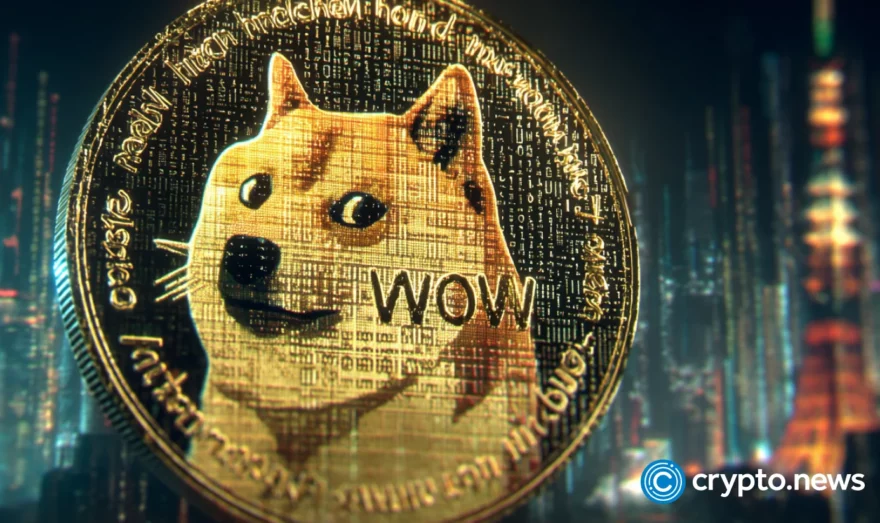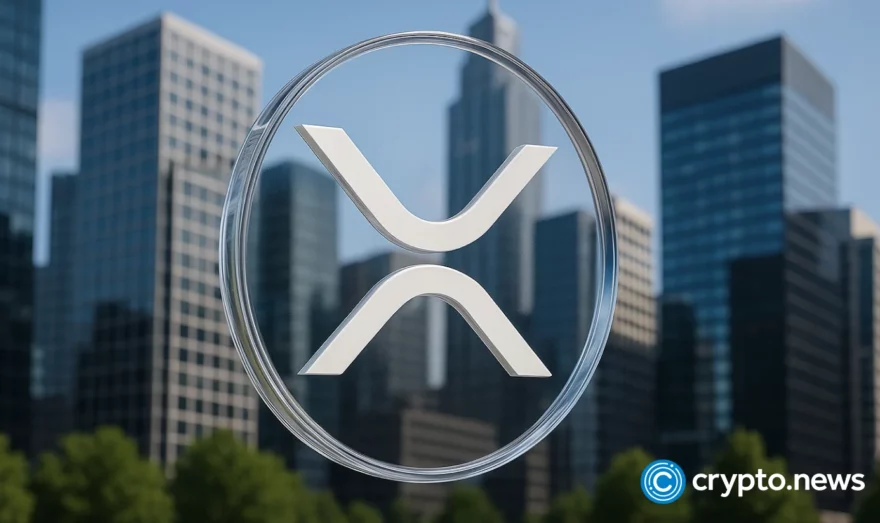Litecoin Price
Litecoin to USD price Chart
Litecoin price today
The current price of Litecoin (LTC) is $81.51, as of Jan 7, 2026. Over the last 24 hours, the price has moved by -2.39%, with a change of 0.11% in the past hour. For longer-term performance, the price has varied by 6.43% over the last 7 days and by -2.7% in the past month.
Market update
The 24-hour trading volume is $408,501,976, and price fluctuations during this time have ranged between a low of $81.08 and a high of $83.98. The all-time high for Litecoin was $410.26 on May 10, 2021, while the all-time low was $1.15 on Jan 14, 2015.
Market ranking and capitalization
Litecoin holds a market rank of #31, with a market capitalization of $6,256,460,909. Its fully diluted valuation stands at $6,256,519,020.
Supply overview
The circulating supply of Litecoin is $76,711,702, out of a total supply of $76,712,414 and a maximum supply of $84,000,000.
Price changes and historical data
Over the last year, Litecoin has experienced a price shift of -20.92%, while over the last 30 days, the price has seen a -2.7% change. The price change over the last 200 days stands at -0.2%.
These metrics are updated every minute to ensure real-time accuracy, helping you stay informed about the latest trends and market movements for Litecoin.
Litecoin History
Litecoin (LTC) overview
Litecoin (LTC) is ranked 31 among the cryptocurrencies by market cap. It’s a Bitcoin (BTC) offshoot that leverages blockchain technology to deliver rapid, secure, and low-cost payments.
What is Litecoin?
Litecoin is a modification of the BTC open-source code meant to improve Bitcoin’s speed, scalability, and accessibility. It uses a peer-to-peer (P2P) network to enable instant and low-cost transactions without relying on a central authority.
The network has a faster block generation rate than BTC, meaning it can handle more transactions per second (TPS) and confirm them more quickly.
It also uses a different hashing algorithm than Bitcoin, called Scrypt, designed to be more resistant to specialized hardware and more accessible to ordinary users.
Litecoin’s native coin, LTC, was released on Oct. 7, 2011, through an open-source client on GitHub, with the network going live five days later, on Oct. 13.
Who are the founders of Litecoin?
Litecoin was founded in 2011 by former Google engineer and early crypto enthusiast Charlie Lee as a complementary Bitcoin hard fork.
Lee also served as Coinbase’s director of engineering from 2015 to 2017 before taking up other interests. He now leads the Litecoin Foundation, a non-profit that helps grow LTC in collaboration with the Litecoin Core Development team.
What makes litecoin unique?
Litecoin’s main selling point is its quicker transactions and lower costs. These two features make it a more appealing alternative to BTC, especially where transaction fees may determine which virtual currency to use.
Another aspect of LTC is its use of Scrypt as a proof-of-work (PoW) algorithm, allowing individual miners to join the network more easily. Scrypt is a memory-intensive algorithm that requires less specialist mining gear than Bitcoin’s SHA-256 algorithm.
LTC also has a larger supply than BTC, with a maximum of 84 million coins to bitcoin’s 21 million. The coin’s developers also intended it to be used in everyday transactions, whereas bitcoin is regarded as a digital store of value.
Litecoin also offers privacy features with its MWEB update, which allows users to opt-in for confidential transactions that conceal the sender and receiver’s identities and the amount transacted.
How is the Litecoin network secured?
As previously mentioned, a PoW mechanism secures the Litecoin network. PoW is a system in which miners must solve challenging mathematical problems to generate new blocks of transactions and earn rewards.
The difficulty of these problems is periodically changed to ensure that the average duration between blocks is around 2.5 minutes.
It makes it difficult for anyone to interfere with the network since they must control more than 50% of the computer power of the miners, which is both expensive and impracticable.
How many LTC coins are there in circulation?
The circulating supply of litecoin is $76,711,702 coins. The remaining litecoins will be gradually released until 2142, when the last one will be mined.
LTC price information
The Litecoin price today is $81.51, with a 24-hour trading volume of $408,501,976. It also has a market cap of $6,256,460,909.
How to buy litecoin
Litecoin can be bought on various platforms using the following steps:
- First, create an account on a platform that supports LTC, such as Coinbase, Binance, or Kraken. Then fund your account with fiat currency or another cryptocurrency you can exchange for LTC.
- Afterward, go to the trading section of the platform and select LTC as the currency you want to buy. If you are using fiat, check the litecoin price in USD to determine the amount you’ll spend.
- Confirm your order, let the platform execute it, and deliver the LTC to your account.
You can keep your Litecoin on the platform or transfer it to a personal wallet for more security and control.
Litecoin guides
How to use litecoin on a decentralized exchange
You can also buy and sell LTC via a decentralized crypto exchange (DEX). You’ll need a compatible wallet that supports the Atomic Swap protocol, which permits cross-chain transactions without trust.
You’ll then need to link your wallet to the DEX’s website and select a trading pair from the list of alternatives. Afterward, you’ll be matched with a trader wishing to swap crypto in the opposite direction.
The user can then confirm the trade’s terms by reviewing them, and the exchange will then be securely and atomically executed through the Atomic Swap, ensuring that both parties receive their funds simultaneously.
What fees are incurred from buying litecoin on a DEX?
Depending on the platform and the network, you could have to pay certain fees while purchasing LTC on a decentralized exchange.
These charges are typically made to execute your transaction and secure the DEX. The most typical ones are swap and gas fees, paid to the DEX to facilitate the trade and to miners or validators confirming your transaction.
A swap fee is typically calculated as a proportion of your trading volume and may vary among DEX platforms.
How to add litecoin to MetaMask
You cannot natively add LTC to MetaMask because Litecoin is not an EVM-compatible network. However, you can circumvent the limitation by depositing the Binance-Pegged version of LTC into your MetaMask wallet.
Binance-pegged coins are tied to their native versions 1:1 and are a same-value representation of the original coin on the Binance Smart Chain (BSC).
To add LTC to your MetaMask wallet via the BSC, you’ll need to get the correct contract address for the Binance-pegged LTC. Next, launch the MetaMask extension on your browser and enter your wallet password.
Ensure you have added the BSC network to your MetaMask wallet and selected it as the default network. After choosing the network:
- Click on the “import tokens” button.
- Paste in the Binance-pegged LTC contract address.
- Click on the “add custom token” button.
- Finally, click on the “import tokens” button that will appear after you’ve completed the previous step, confirming that you’ve added Binance-pegged LTC to MetaMask.
Litecoin market sentiment
There are conflicting sentiments on the Litecoin market. On the one hand, more platforms, shops, and customers are taking LTC as payment. The coin has benefited from its connection to BTC as well.
On the other hand, other altcoins offering faster transactions, lower fees, or more sophisticated features seriously threaten LTC’s dominance.
Litecoin’s price also fluctuates a lot due to regulatory uncertainties in the crypto sector. Because of this, it’s hard to determine whether the present LTC market sentiment is bullish or bearish; instead, it depends on how successfully LTC can address its issues and build on its advantages.
FAQs
Why is litecoin so cheap?
Several factors may contribute to the relatively lower price of Litecoin compared to other cryptocurrencies:
Perception: The perception of LTC in the crypto market has played a role in determining its price. Being a fork of the Bitcoin blockchain, LTC is mainly compared to BTC, which is not only bigger in market capitalization but also has a long-established reputation among the crypto community. Along such a behemoth, LTC may be perceived as having less value or utility, leading to lower demand and, subsequently, a lower price.
Competition: Like the first point, litecoin faces intense competition from other cryptocurrencies with larger market caps, like BTC and ETH. The presence of more successful alternatives in the market has diluted the demand for and investment flow into litecoin, thus impacting its price.
Supply: The total supply of litecoin is four times larger than bitcoin’s. This has resulted in a larger circulating supply of LTC in the market, which can put downward pressure on its price.
Adoption: While litecoin has been around for quite a while and has established a solid reputation for itself, it is yet to see the same level of development or widespread adoption as other leading cryptocurrencies, causing it to have a much lower price.
How closely does litecoin (LTC) follow the trend of bitcoin?
Litecoin has historically shown a correlation with bitcoin (BTC), meaning that their prices tend to move in a similar direction. This link is due to several factors, including the overall sentiment and trends in the crypto market and the fact that LTC was inspired by and shares similarities with BTC.
Bitcoin is the dominant and most widely recognized cryptocurrency, often setting the tone for the broader crypto market. When it experiences significant price movements or undergoes market-changing events, it tends to have a spillover effect on other cryptocurrencies, including litecoin.
However, it’s important to note that while litecoin generally follows bitcoin’s trend, it may not always mirror it exactly. There can be instances where litecoin outperforms or underperforms bitcoin due to factors specific to litecoin or market dynamics at the time.
What are the disadvantages of litecoin?
Litecoin has several disadvantages; some are common issues affecting most digital assets, and others are specific to it. They include the following:
Limited adoption: Although litecoin is one of the oldest cryptocurrencies in the market, it still has relatively lower adoption and recognition than its peers like bitcoin and ether.
Regulatory uncertainty: Like other cryptocurrencies, litecoin operates in a regulatory environment that is still evolving and subject to potential changes. Uncertainty surrounding regulations can impact the adoption, trading, and overall stability of litecoin.
High energy use: litecoin uses the proof-of-work (PoW) consensus mechanism, which has been criticized for its high energy consumption. Some industry researchers estimate that mining one LTC at its current difficulty level would consume about 3,425 watts of power, which is starkly different from other cryptocurrencies like ETH, which is reported to have reduced its previous energy consumption by more than 99% after shifting to the much more eco-friendly proof-of-stake (PoS) consensus mechanism.
Centralization: litecoin is more centralized than bitcoin or other bitcoin forks like bitcoin cash (BCH). It means a significant portion of the LTC network is controlled by a small number of entities, thus negating the whole point of cryptocurrency and blockchain technology, which is to create decentralized systems and products to the highest possible degree.
ASIC resistance: Initially, litecoin was designed to be resistant to ASIC (application-specific integrated circuit) miners to make it more accessible to everyone. However, that seems to have changed, with LTC now showing a hashrate distribution similar to BTC’s and a significantly lower security level. This factor may impact its competitive edge or even hamper its long-term viability.
How can I earn free litecoins?
You can earn free litecoins through a litecoin faucet or “get-paid-to” (GPT) website that rewards users with free LTC in exchange for completing simple tasks such as taking part in surveys, playing games, or watching ads.
Another way to earn free litecoin is through cloud mining, where you download certain software that leverages your device’s memory to generate LTC.
However, in both cases, you have to be very careful not to be scammed. Some websites claiming to offer free LTC may be phishing operations. Some cloud-mining software may also contain harmful scripts that can compromise your device’s security and steal your data.
LTC Price Statistics
| Litecoin Price | $81.51 |
|---|---|
| Price Change 24h | -2.39% |
| Price Change 7d | 6.43% |
| Trading Volume 24h | $408,501,976 |
| 24H Low | $81.08 |
| 24H High | $83.98 |
Litecoin Market Cap
| Market Cap Rank | #31 |
|---|---|
| Market Cap | $6,256,460,909 -2.38% |
| Fully Diluted Valuation | $6,256,519,020 |
Litecoin Price History
| All-Time High May 10, 2021 | $410.26 -80.09% |
|---|---|
| All-Time Low Jan 14, 2015 | $1.15 7008.26% |
Litecoin Supply
| Circulating Supply | $76,711,702 |
|---|---|
| Max Supply | $84,000,000 |
| Total Supply | $76,712,414 |
Latest Litecoin News




